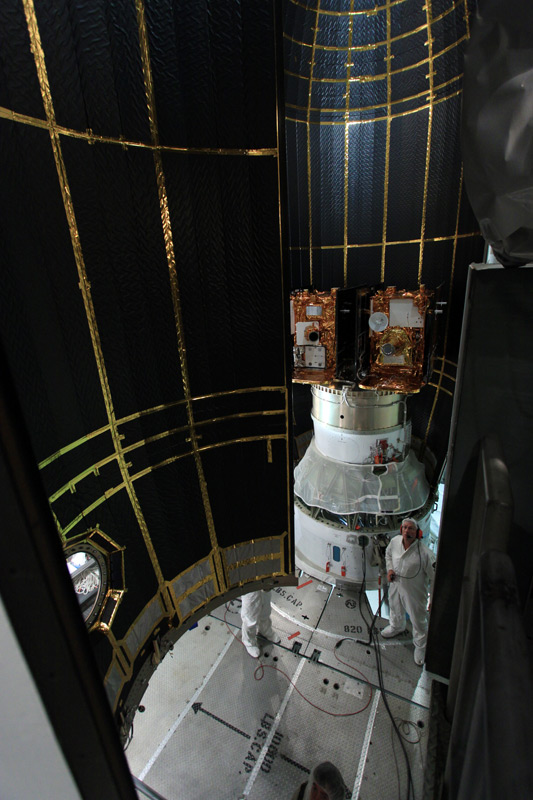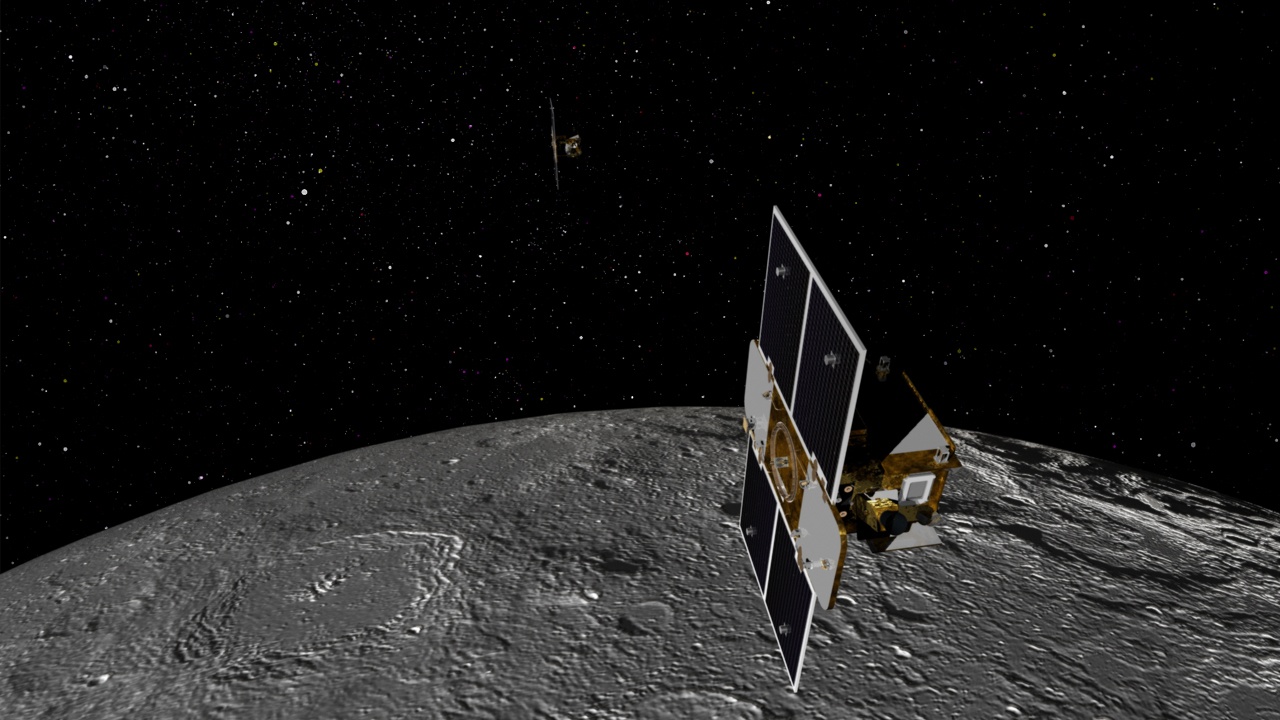
NASA is gearing up to launch a set of twin spacecraft on a mission to map the moon's gravity on Thursday (Sept. 8), but Mother Nature may not cooperate.
The twin Grail probes, which will study the moon's gravitational field in unprecedented detail, are slated to blast off from Florida's Cape Canaveral Air Force Station Thursday at 8:37 a.m. EDT (1237 GMT), with a second launch opportunity about 40 minutes later. But clouds and thunderstorms are expected to linger near Florida's Space Coast for the next few days, making a delay more likely than not, officials said.
"We're going to be sandwiched in between probably two areas of thunderstorms," Grail launch weather officer Joel Tumbiolo, of the Air Force's 45th Weather Squadron, told reporters today (Sept. 6). "Right now, the forecast for the beginning of the launch window is a 60 percent chance of violation."
If Thursday's launch is delayed, the outlook appears much the same for Friday, Tumbiolo said. But the forecast calls for better conditions on Saturday and Sunday, he added. [Photos of NASA's Grail Moon Gravity Mission]
"Those days look improved, so we're looking forward to that," Tumbiolo said.
The two Grail spacecraft have a 42-day launch window that extends through Oct. 19. So the $496 million mission should have plenty of chances to get off the ground, despite the storms churned up during an active Atlantic hurricane season.
Mapping the moon's gravity
Get the Space.com Newsletter
Breaking space news, the latest updates on rocket launches, skywatching events and more!
Whenever the probes lift off, the Grail spacecraft (their name is short for Gravity Recovery And Interior Laboratory) should arrive at the moon around New Year's Day after a circuitous, energy-efficient route, mission managers said. [Video: Grail's Mission to Map Moon Gravity]
The spacecraft are expected to settle into orbits just 34 miles (55 kilometers) above the lunar surface, then chase one another around the moon for three months while keeping close track of the distance between them. This distance will change slightly as they travel, owing to regional differences in the moon's gravitational field.
The two spacecraft, known as Grail-A and Grail-B, will be able to gauge these distance changes with incredible precision, though the probes will be 75 to 225 miles (121 to 362 km) apart.
"What we're trying to measure is the width of less than a human hair," said John Henk, Grail program manager at Lockheed Martin Space Systems in Denver.

Learning about the moon and its history
These precisely determined distance variations will allow researchers to map out the lunar gravity field 100 to 1,000 times better than has ever been done before, researchers said. Knowing the gravity field so well will yield insights into the moon's structure and evolutionary history.
"We will learn more about the interior of the moon with Grail than all previous lunar missions combined," said Ed Weiler, associate administrator at NASA's Science Mission Directorate in Washington.
That information should in turn tell scientists a lot about how the other big, rocky bodies in the inner solar system — Mercury, Venus, Earth and Mars — formed and evolved as well, researchers have said.
You can follow SPACE.com senior writer Mike Wall on Twitter: @michaeldwall. Follow SPACE.com for the latest in space science and exploration news on Twitter @Spacedotcom and on Facebook.
Join our Space Forums to keep talking space on the latest missions, night sky and more! And if you have a news tip, correction or comment, let us know at: community@space.com.

Michael Wall is a Senior Space Writer with Space.com and joined the team in 2010. He primarily covers exoplanets, spaceflight and military space, but has been known to dabble in the space art beat. His book about the search for alien life, "Out There," was published on Nov. 13, 2018. Before becoming a science writer, Michael worked as a herpetologist and wildlife biologist. He has a Ph.D. in evolutionary biology from the University of Sydney, Australia, a bachelor's degree from the University of Arizona, and a graduate certificate in science writing from the University of California, Santa Cruz. To find out what his latest project is, you can follow Michael on Twitter.









